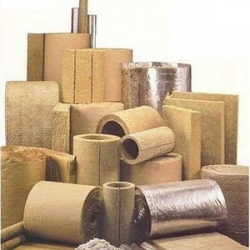Types of insolation materials

There are a great variety of insolation materials in the market. However, they can be classified.
Natural insolation materials
- straw (by itself or as part of Adobe);
- the land (by itself or zemlebit);
- sawdust (shavings). It can also be used with cement (opilkobeton) and clay;
- leaves;
- rye seeds (in conjunction with wet clay and straw; this mixture is poured into the ceiling, rye sprouts, strengthening the roots of the overlap, and withered stalks his insulate);
- cane and its derivatives (reed, reed plate);
- peat and peat blocks;
- cork;
- expanded clay (which, in fact, is nothing more than a clay).
Artificial insolation materials
- basalt (stone, rock) wool ;
- glass wool and other manufactured now, heaters on the basis of glass fiber (Ursa, Isover, Knauf);
- expanded polystyrene and its derivatives (penoplex, polystyrene, extruded polystyrene); < / li>
- polyethylene foam (penofol, etc…), Foil and foil;
- ecowool (could be attributed to its natural insulation, because it turns out she is from cellulosic waste, t. E., In fact, made of wood).
In addition to these, there are other heaters. For example, many kinds of lung concrete, honeycomb plastics, particle board, fiberboard and similar materials, Liquid insulation, asbestos insulation, and others.Each heater has a specific purpose, coming from the properties of the material.
For example, for facade insulation applied foam or mineral wool (mats). For insulation slabs – the same mineral wool, but in the form of rolls. Ceilings and floors can be insulated in any bulk material: expanded clay, ecowool. Pipes insulated roll materials (glass wool, asbestos insulation). Etc.
So you can choose the most suitable insulation, in a future article we describe in detail about each.
